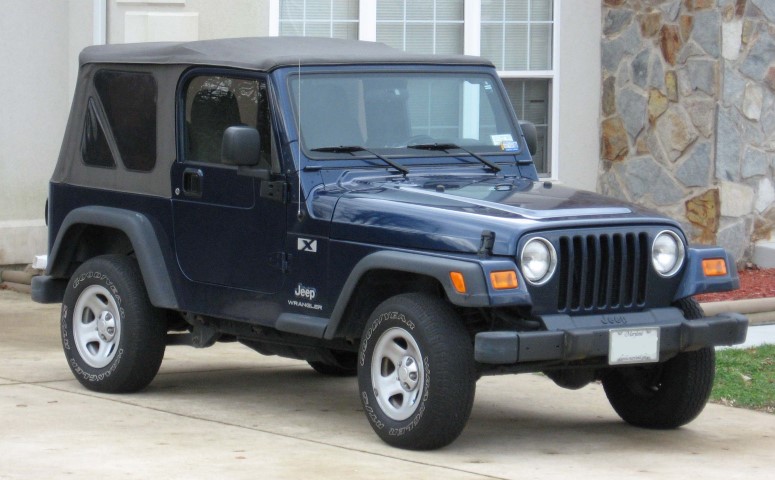Jeep Wrangler TJ 2000 repair manual download
 |
Jeep Wrangler TJ 2000 factory workshop and repair manualon PDF can be viewed using free PDF reader like adobe , or foxit or nitro . File size 47 Mb PDF document searchable with bookmarks. It is compressed as a zip file which you can extract with 7zip Covers the gasoline petrol engines 2.5 L AMC straight-4 engine * 4.0 L AMC straight-4 engine TABLE OF CONTENTS Jeep Wrangler TJ 2000 factory workshop and repair manual |
In 1990, development of a successor to the YJ began in Chrysler's "Jeep-Truck Engineering Pre-Program" department under Bob Sheaves and TJ program director, Craig Winn. Mules based on the YJ were built from 1990 to 1993, when formal approval was given for the TJ development program at a 0 million budget. From 1991 to 1992 designers worked at the new Chrysler Technical Center, building on various design proposals. In late 1992, Michael Santoro's TJ proposal was chosen by Tom Gale, Lee Iacocca, and executive management. In May 1993, now with engineering and supplier input, Santoro's final Wrangler production design was frozen at 32 months ahead of initial assembly. Verification prototypes using production bodies were built from early 1994 and tested through late 1995. As YJ production ceased in December 1995, the last pre-production TJ examples were assembled, with start of series of production in January 1996. Unveiled on January 2, 1996, at the 1996 Detroit Auto Show as an early 1997 model year introduction (1996 model year skipped), the TJ was an evolutionary update. It later arrived in Jeep showrooms in April 1996, after 6 years of overall investment and 36 month production development phase.Instead of leaf springs, this updated Wrangler featured a modern coil-spring suspension, front and rear, based on that of the Jeep Grand Cherokee, for better ride and handling, and a return to the classic CJ's round headlamps. The engine is the same 4.0 L AMC 242 Straight-6 used in the Cherokee and Grand Cherokee. A 2.5 L AMC 150 Inline-4 engine was available on entry-level models until 2002. The 2.4 L DOHC 4-cylinder engine previously used on the Chrysler PT Cruiser replaced it for 2003.A right hand drive version of the TJ was available for export markets, and was also offered for sale to U.S. rural route postal carriers. The version offered to U.S. postal carriers was only available with an automatic transmission.
In 1998 (MY1999), the fuel tank became standard at 19 U.S. gallons (72 L; 16 imp gal) capacity. There were some changes between the 2002 and 2003 years. From 1996 to 2002, the side door mirrors were black metal framed mirrors; and from 2003 to 2006 they were plastic molded mirrors. The fit of hard and soft tops is slightly different, and the fabric and colors available changed from 2001 to 2003. In 2002 (MY2003), the 3-speed automatic transmission was replaced with a 4-speed automatic with overdrive. The overdrive can be turned off with a dash switch. The radio bezels went from a rectangle in 2002 to a rounded-edged rectangle for 2003. The sound bar inside was changed to sound pods. The interior seats also changed design, going from a rounder model to one with a distinct separation between back and headrest areas. The standard skid plate was also revised for 2003 to make room for the Rubicon's bigger NV241OR transfer case. The change from the 30/32RH to the 42RLE also gained an additional skid plate. This version of the Wrangler is also notable for being the last production vehicle to use AMC-related parts. The AMC Straight-4 engine was retired after the 2002 model year, and both the AMC Straight-6 engine and the door handles (the latter of which first appeared on AMC vehicles in the 1968 model year) were retired along with this generation in 2006. Like the YJ Wrangler, the TJ Wrangler used both the AMC passenger car door handles as well as the larger door handles off the AMC-built Jeep CJ for higher-end models.

 0 Items (Empty)
0 Items (Empty)